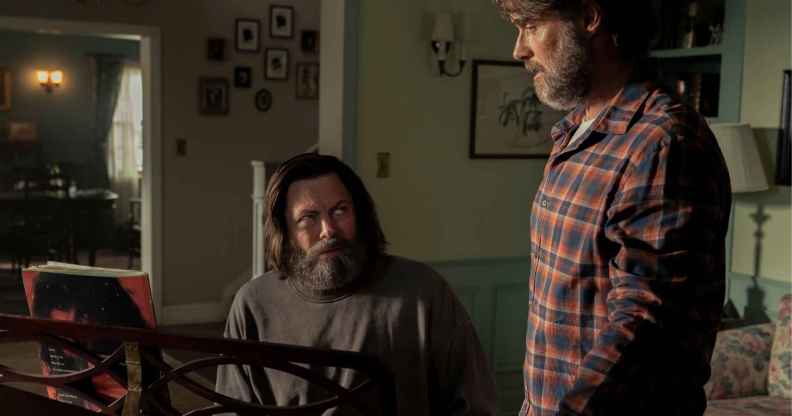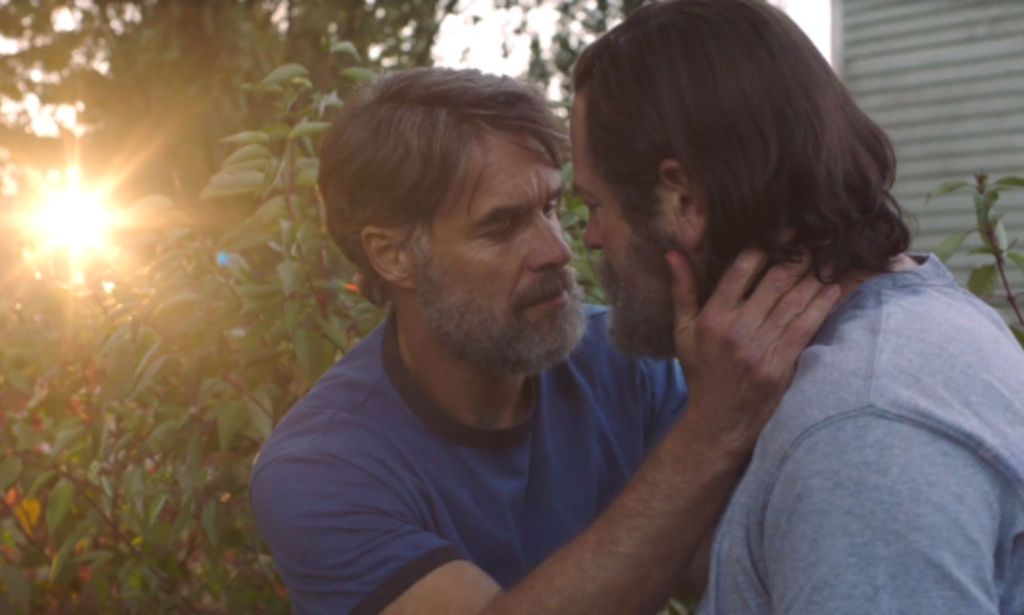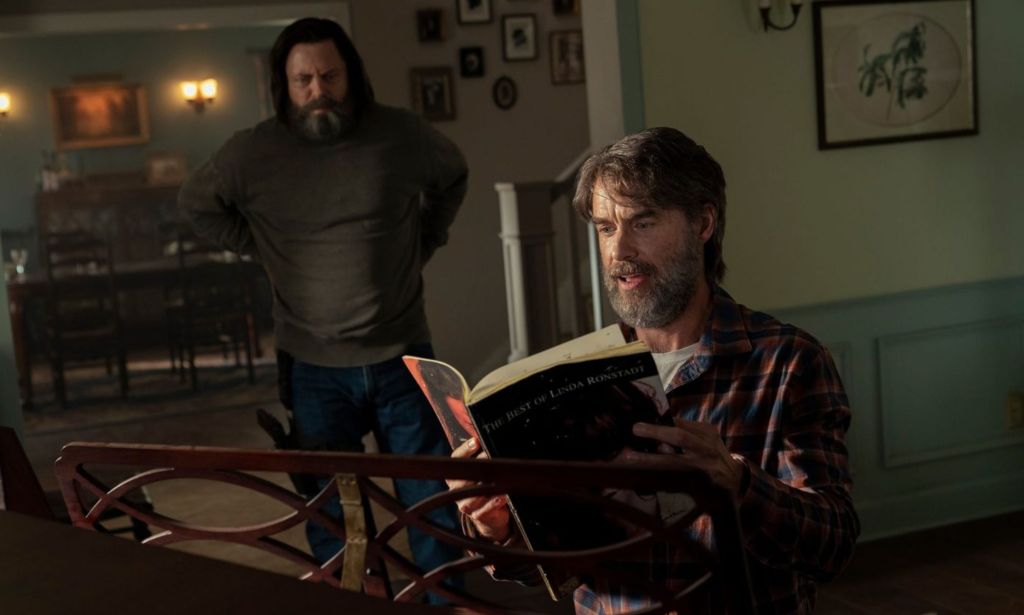The Last Of Us director was determined not to show Bill and Frank’s dead bodies in episode 3

Nick Offerman as Bill and Murray Bartlett as Frank in The Last Of Us (HBO)
The Last of Us director Peter Hoar has explained why he didn’t think it wasn’t “necessary” to film Bill and Frank’s corpses at the end of the third episode of the hit series.
Based on the popular video game, HBO’s post-apocalyptic series The Last of Us won favour with both the critics and public alike for its brilliantly adapted plot and moving performancex from leading cast members, including Pedro Pascal, Bella Ramsey and Melanie Lynskey.
The standout episode for many LGBTQ+ viewers, however, was undoubtedly “Long, Long Time”. Directed by Peter Hoar – for which he landed an Emmy nomination – it starred Parks and Recreation’s Nick Offerman and Murray Bartlett (The White Lotus) as gay lovers Bill and Frank.
Detouring away from the main plot, the audience followed the nuanced and tender romance between the two pandemic survivors over two decades. In the end, the pair decided to reclaim their power and die peacefully in each other’s arms after Frank was diagnosed with a terminal illness.
Fans praised the show for subverting the toxic “bury your gays” trope, and notably appreciated the sensitive decision to not show Bill and Frank’s dead bodies at the end of the third episode.
In an interview with Deadline, Hoar explained why the team upended expectations in the otherwise death-ridden world of The Last of Us.

“That was always on the page, never to show the dead bodies,” he explained. “It’s also something we discussed as a group at the very beginning. It’s not gratuitous.
“I think what [executive producer] Neil Druckmann would probably say is that the world of The Last of Us is a very brutal one. And in a brutal world, people are gonna get hurt and people are gonna experience horrendous trauma to their bodies and their minds.”
Hoar went on to explain that it was ultimately series showrunner and writer Craig Mazin who decided that the episode could stand without a depiction of Bill and Frank’s bodies.
I think [co-creator] Craig [Mazin] thought we just didn’t need it,” he continued. “It wasn’t necessary.”
Unlike the death, violence and gore we witness in the rest of the show, the audience is simply left with the memories of Bill and Frank’s idyllic life together. The episode offers many quietly beautiful moments of intimacy between the pair, including scenes in which they play the piano together, grow strawberries and even get married.

The success is also down to the brilliant chemistry between the two stars.
“We just let them go and do it,” Hoar said. “Those two men were just divine and full of love and understanding and had a clear passion for this script and the story. Lots of people have said it’s a great middle-aged love story, as well as it was a male love story.”
And if you found yourself crying by the end of the episode, you certainly weren’t alone.
“I certainy didn’t set out to tell a story that would make the world cry uncontrollably, but I did [so],” Hoar added, about whether it had become too emotional. “The simple answer is it can become too tear-jerky. There’s a straightness to this gay love story. It’s not flamboyant. It’s genuine and it’s authentic.”
The Last of Us season one is available to stream on Max in the US and on demand on Sky Atlantic in the UK. There is currently no release date for season two.
How did this story make you feel?

